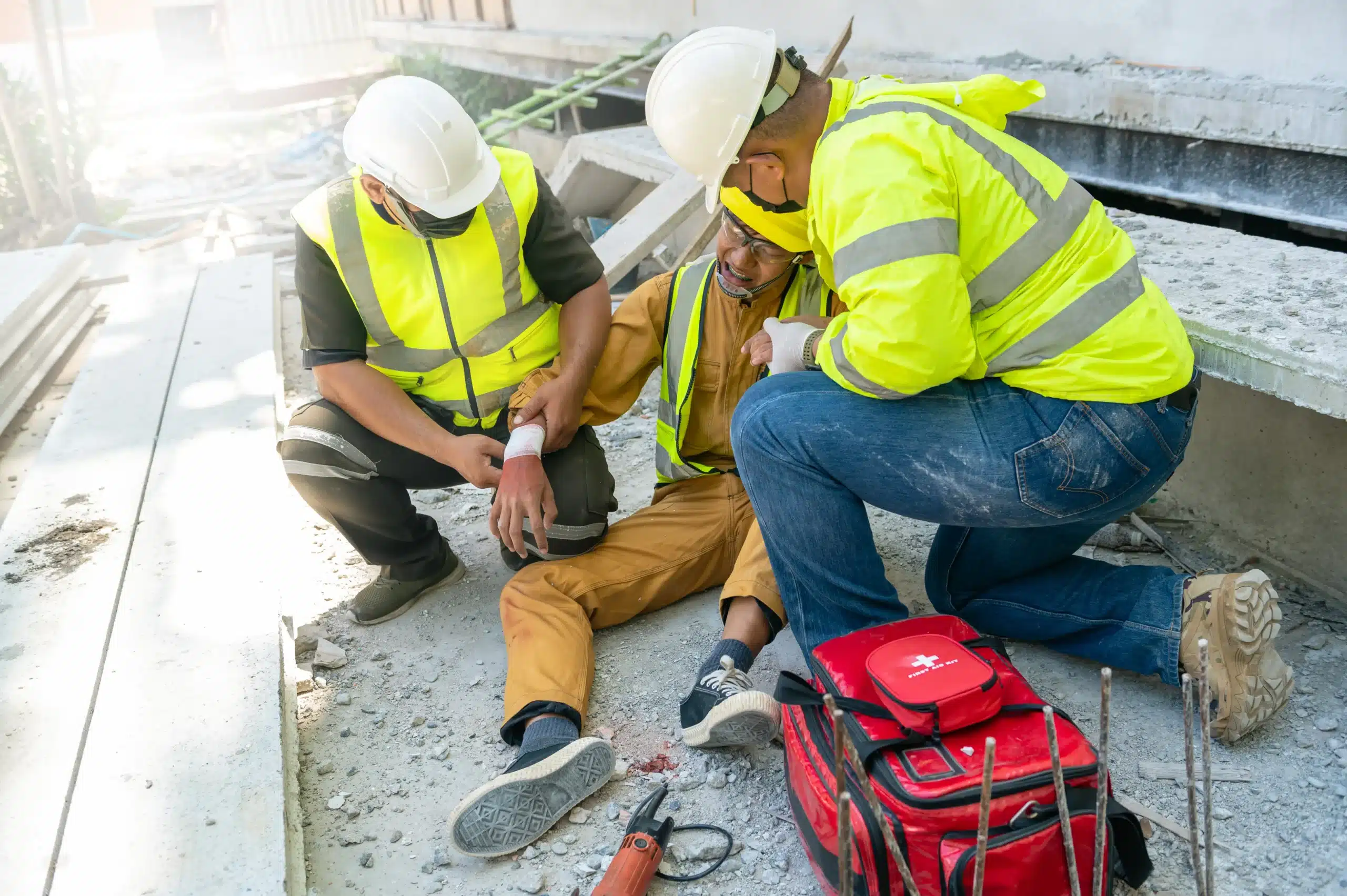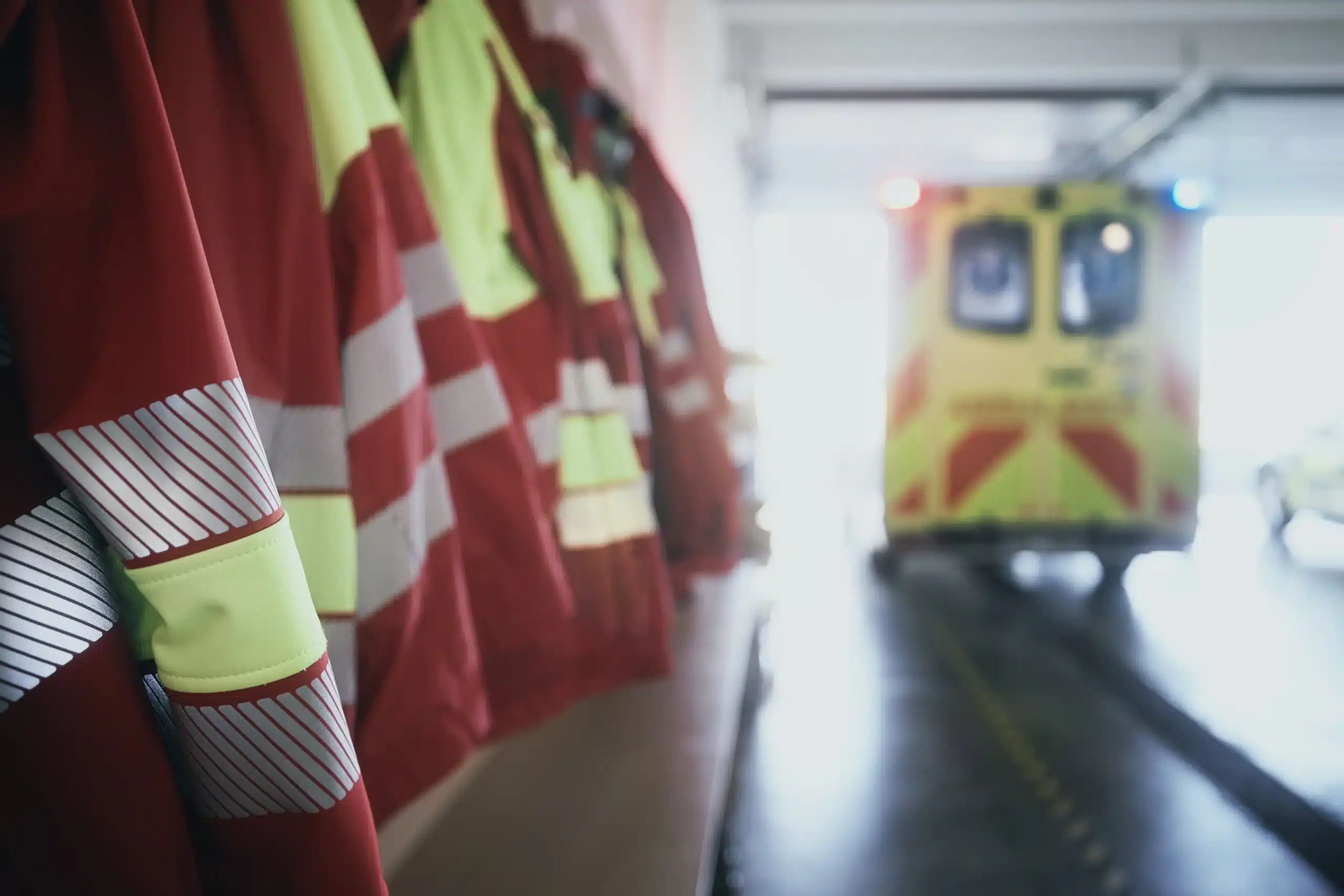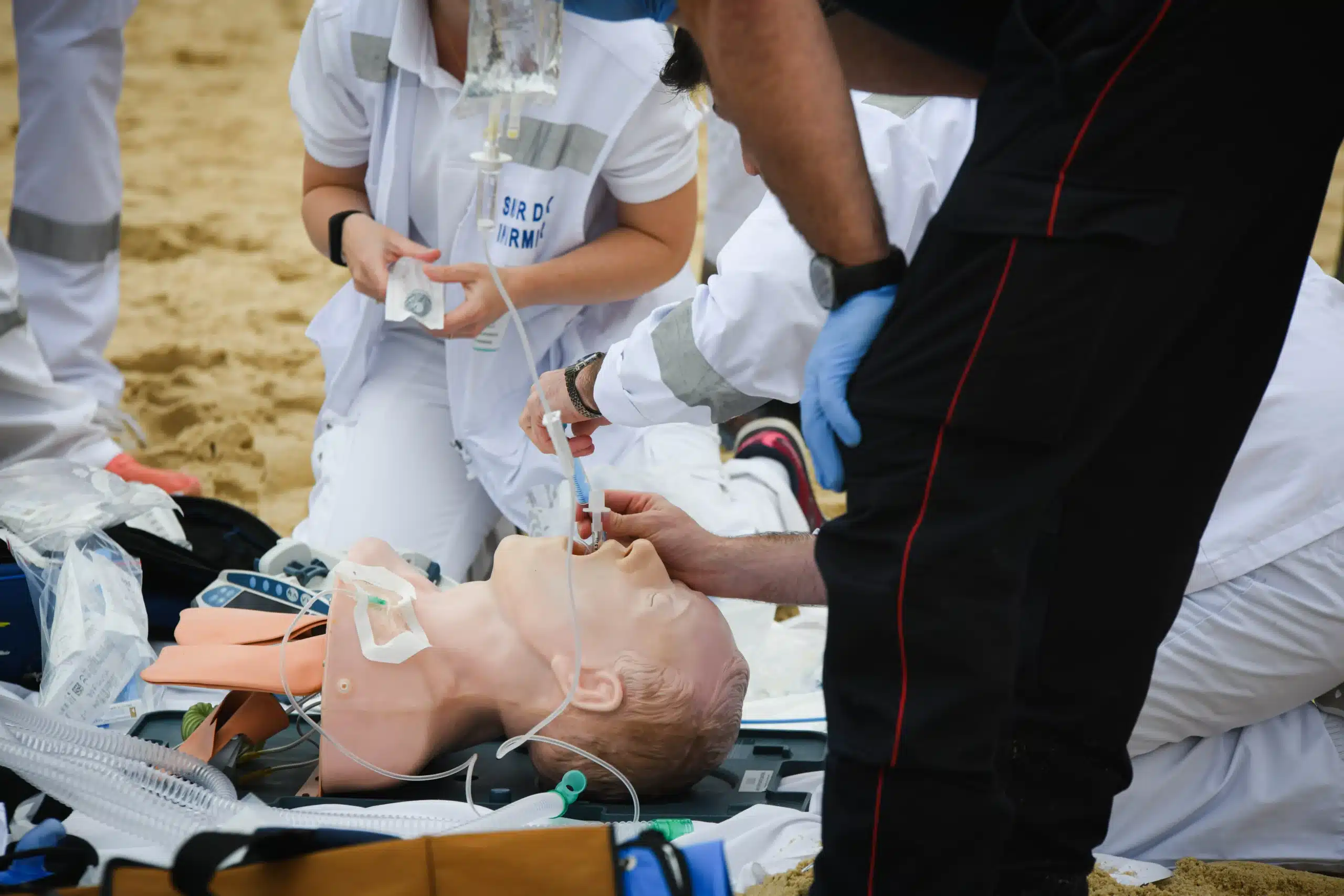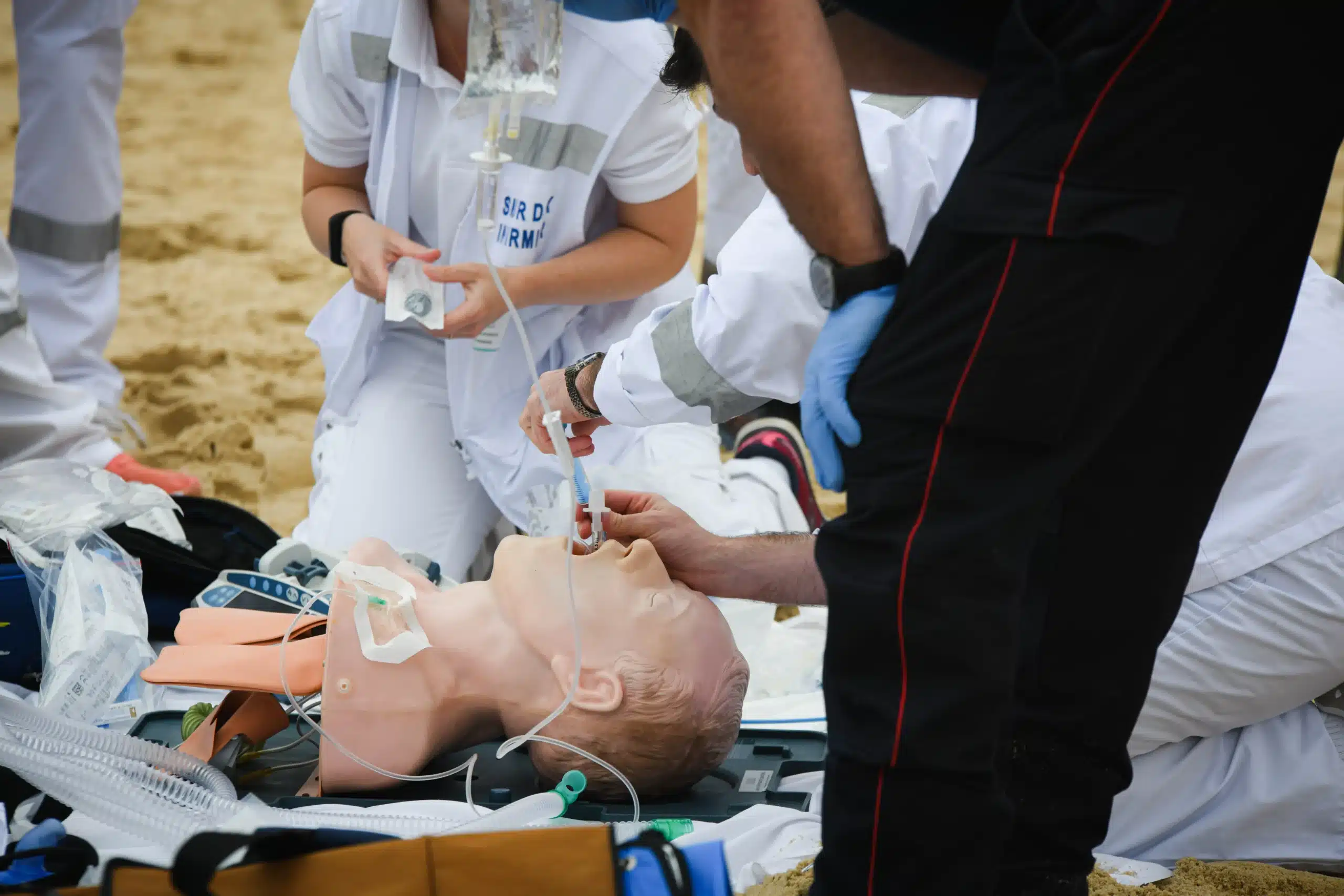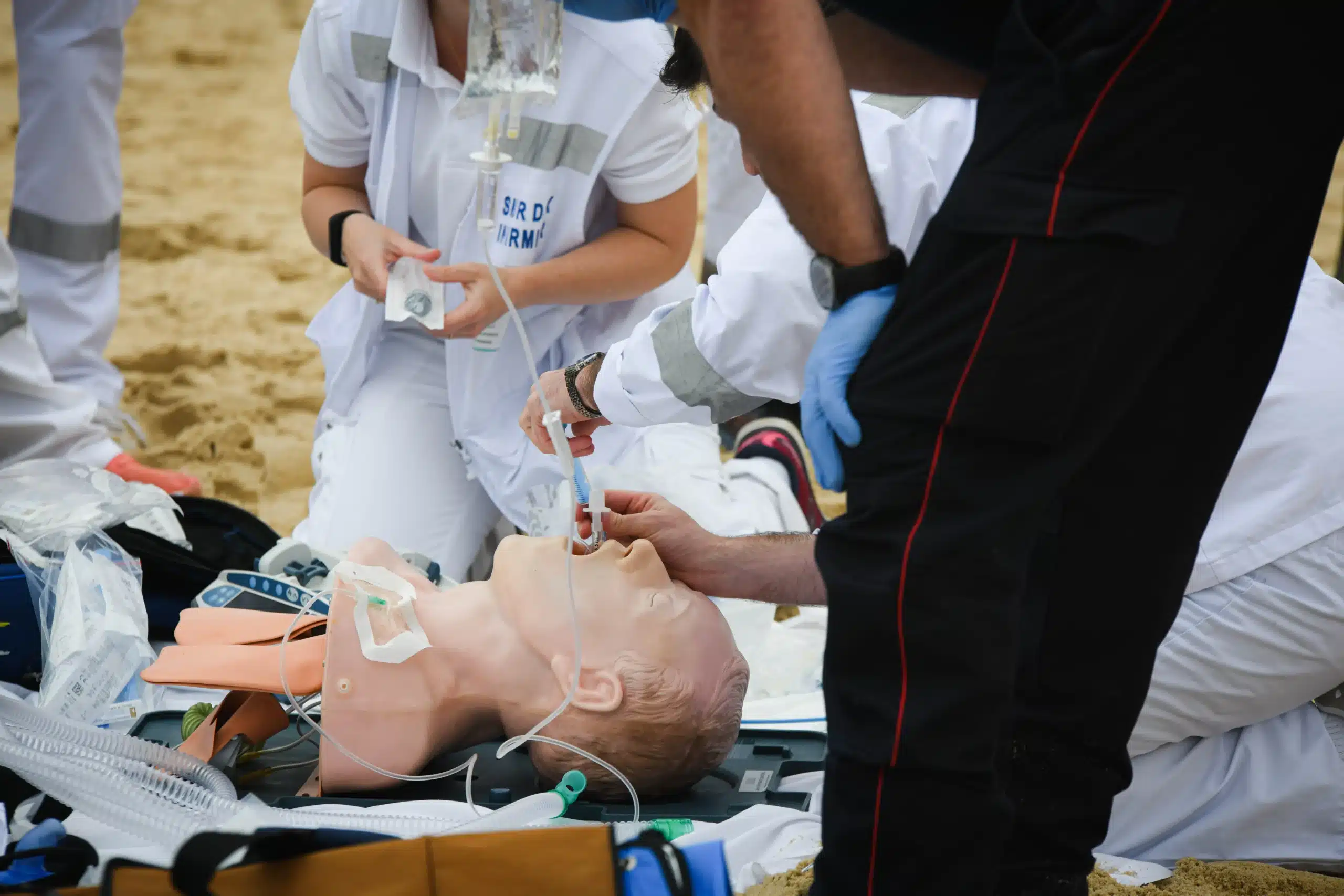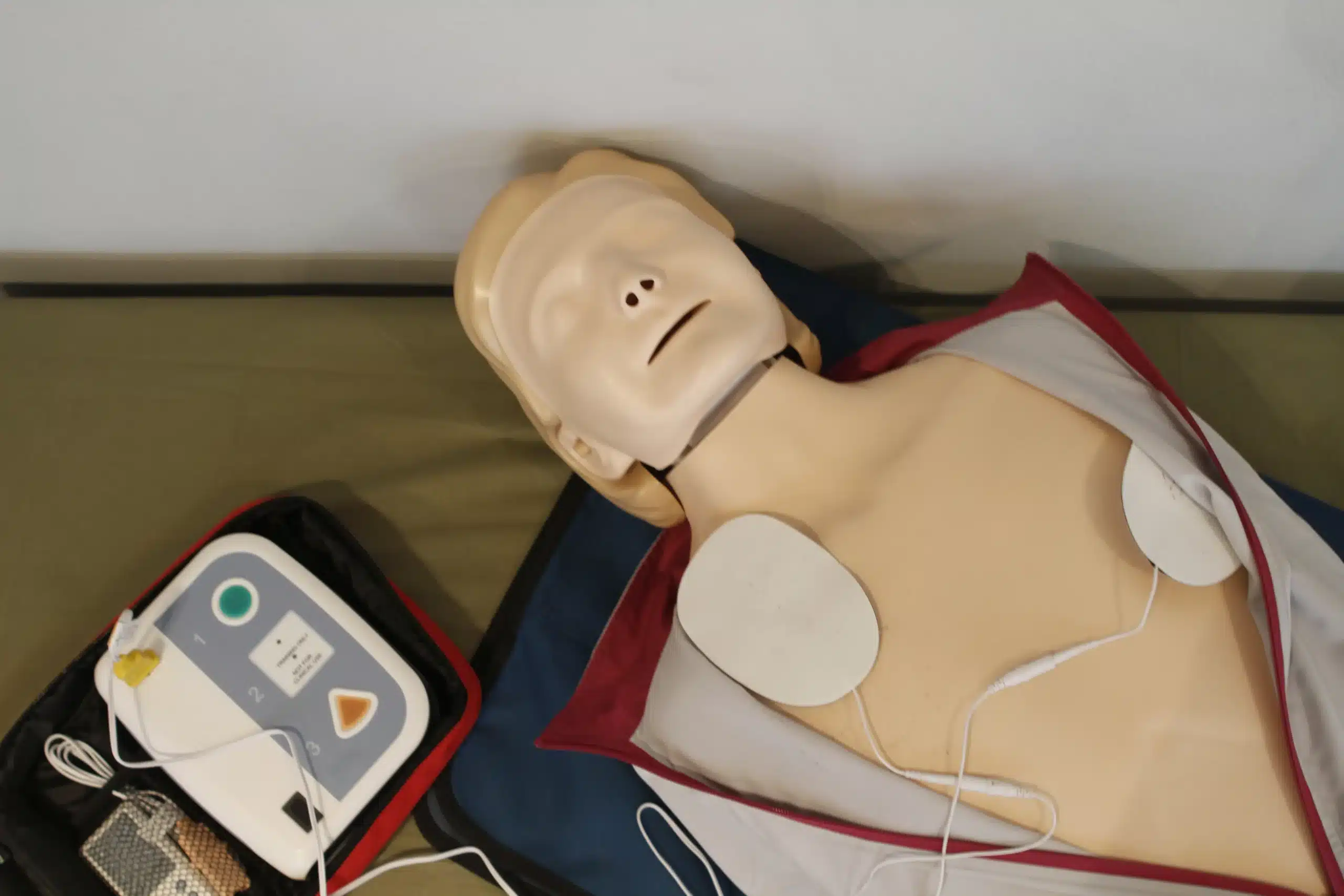Working in healthcare means your skills need to be as current as your knowledge. BLS recertification isn’t just a requirement; it’s a refresher that keeps your life-saving abilities honed. If you’re searching for “BLS recertification near me,” you’re in the right place. This post will guide you through finding the perfect recertification course, whether you’re in Pleasanton, Dublin, or San Ramon. We’ll explore the importance of staying updated on the latest AHA guidelines, discuss different course formats (online, in-person, blended), and offer tips for choosing a provider that meets your needs and budget. Let’s make recertification straightforward and stress-free.
Key Takeaways
- Maintain your BLS skills and meet workplace requirements by recertifying regularly. Explore online, in-person, and hybrid course formats to find the best fit for your schedule and learning style.
- Research providers, compare costs, and confirm alignment with AHA guidelines before committing to a course. Check with your employer about their preferred providers and any available discounts.
- Prepare for recertification day by reviewing current guidelines and practicing essential BLS skills. Understanding the process and requirements beforehand will make for a smoother experience.
What is BLS Recertification?
What is BLS and Why Recertify?
Basic Life Support (BLS) equips healthcare providers and anyone who might respond to a medical emergency with life-saving skills. A BLS certification confirms you know these essential skills—CPR, using an AED, and airway management techniques—so you can confidently handle emergencies. It’s a must-have for most healthcare professionals and other roles like lifeguards and fitness instructors. Think of it as your toolkit for responding effectively when every second counts. Pleasanton CPR Classes offers comprehensive BLS training and certification.
Why Stay Current with BLS Skills?
BLS guidelines and best practices evolve, so staying up-to-date is key. Regular BLS recertification ensures you’re current on the latest American Heart Association (AHA) guidelines and techniques. This not only helps you provide safe and effective care, but it’s often a job requirement. Plus, refreshing your skills can make you feel more confident and prepared in a real emergency. Knowing you have the most current knowledge can make all the difference. For more information on BLS renewal, check out this helpful resource.
Find BLS Recertification Courses Near You
Finding the right BLS recertification course requires a little research, but it’s worth the effort to ensure you receive high-quality training. Here’s how to find local providers, search online, and evaluate potential courses:
Where to Find Local BLS Recertification Providers
Start locally. Check with hospitals, community colleges, and established training centers like Safety Training Seminars. We offer BLS certification and recertification courses designed to fit your schedule and refresh your skills. Local fire departments or EMS agencies often provide these courses as well. Word-of-mouth can be helpful, so ask colleagues or check with professional organizations for recommendations. Don’t forget to explore options in nearby cities like Dublin and San Ramon if you’re located in Pleasanton.
How to Search Online for Local Courses
Expand your search online. “BLS recertification near me” is a good starting point. Don’t just pick the first option you find. Consider factors like your learning style, schedule, and budget. The American Red Cross also offers BLS renewal and recertification courses for healthcare providers. Reading reviews can give you a sense of other students’ experiences.
Evaluate Course Providers and Accreditation
Before signing up, confirm the provider’s accreditation and instructor qualifications. Reputable providers use high-quality, evidence-based materials created by medical professionals. Look for affiliations with recognized organizations like the American Heart Association or the American Red Cross. Most importantly, ensure the course meets your employer’s requirements and provides a valid certification card accepted in your field.
Compare BLS Recertification Course Formats
Choosing the right BLS recertification course format depends on your learning style, schedule, and budget. Let’s break down the pros and cons of in-person, online, and hybrid learning.
In-Person Courses: Benefits of Hands-On Learning
In-person BLS recertification courses offer hands-on learning and real-time feedback from certified instructors. This format is ideal for those who learn best through tactile experiences and prefer direct interaction. You’ll have the opportunity to practice skills, ask questions, and receive immediate clarification on any confusing concepts. This direct interaction can be invaluable, especially when mastering life-saving techniques. However, in-person classes require a fixed schedule and travel, which can be a challenge.
Online Courses: Flexibility and Convenience
Online BLS recertification courses offer unparalleled flexibility and convenience. You can complete the coursework at your own pace, anytime, anywhere. This format is perfect for those with unpredictable schedules or limited access to in-person training centers. Many reputable organizations, like the American Heart Association, offer high-quality online BLS recertification. While convenient, online courses may not provide the same level of hands-on practice as in-person training. Some online courses address this by requiring a skills check-off with an instructor after completing the online modules.
Hybrid Courses: Combining Online and In-Person Learning
Hybrid courses combine online learning with in-person training. You’ll complete the theoretical coursework online at your own pace, then attend a shorter, in-person session focused on hands-on skills practice and assessment. This blended learning approach is a great option for those who want the convenience of online learning but also recognize the importance of hands-on training. Pleasanton CPR Classes offers this hybrid format, making BLS recertification straightforward and accessible.
Consider BLS Recertification Costs
If your BLS certification is about to expire and you’re searching for “BLS recertification near me,” you want a course that fits your schedule, meets your budget, and provides high-quality training. At Safety Training Seminars, we offer BLS certification and recertification courses designed for just that.
Typical Course Prices
BLS recertification courses typically range in price, often depending on location, course format (online, in-person, or blended learning), and the training provider. Comparing prices from different providers in your area is always wise. If you’re looking for affordable BLS recertification in Pleasanton, Dublin, or San Ramon, Pleasanton CPR Classes offers a variety of courses to fit your schedule and budget. We even have a low price guarantee!
Additional Fees
Remember that the initial course price might not include everything. Some providers charge extra for study materials, certification cards, or online access codes. Ask about any potential additional fees upfront so you can budget accurately. Also, consider the format. While online learning offers flexibility, in-person BLS recertification provides valuable hands-on learning, which might be more beneficial for some.
Save on Recertification Costs
Look for ways to save. Some training centers, like ours, offer discounts for group registrations or returning students. Check if your employer will cover the recertification cost, as many do. You can also explore options like our RQI classes for cost-effective renewal. Maintaining your current certification is an investment in your career and the safety of those around you.
BLS Recertification Prerequisites and Requirements
Before signing up for BLS recertification, double-check a few things. Understanding the requirements beforehand will save you time and potential headaches.
Current Certification Status and Time Frame
Your BLS certification is valid for two years. Plan to recertify before it expires. You can usually renew up to 30 days after the expiration date, but it’s best to avoid this. Some employers may not accept an expired card, even if it’s within that grace period. Check with your employer to confirm their policy. If your card is really expired, you’ll have to take the full BLS course again, not just the recertification. For helpful advice on keeping your certification current, check out resources like Save A Life CPR. The American Red Cross also clarifies that you’ll need a current or recently expired (within 30 days) BLS Provider card to be eligible for recertification.
Required Documentation and Skills Assessment
BLS recertification involves a few key steps. You’ll choose a course (online, in-person, or blended learning), complete the coursework, and pass an exam. Most courses also include a skills check, where you’ll demonstrate your CPR technique on a manikin. Don’t forget to schedule this in-person component, if required. Overlooking this crucial step can cause delays or even result in missing your recertification deadline, as pointed out by this article on common recertification pitfalls. During your recertification course, expect to cover standard scientific learning objectives, the latest medical information and techniques, and an emphasis on critical thinking, teamwork, and debriefing, similar to what’s described by the Red Cross. Once you complete all the requirements, you’ll receive a new BLS certification card, good for another two years.
Choose the Right BLS Recertification Course
Finding the right BLS recertification course means considering a few things to make sure it fits your learning style, schedule, and career needs. It’s not just about renewing your certification; it’s about keeping those vital lifesaving skills sharp.
Assess Your Learning Style and Schedule
First, how do you learn best? Do you prefer a hands-on classroom environment with direct interaction? Or do you like the flexibility of online learning, studying at your own pace? Your schedule matters too. Factor in work, family, and other commitments. A course that easily fits into your life will make recertification much less stressful. If you’re juggling a lot, an online course might be a good option. If you value hands-on learning, an in-person class might be better. Pleasanton CPR Classes offers various course times and formats. See what works for you by checking out our BLS course options.
Evaluate Course Content and Duration
Next, look closely at what the course covers and how long it takes. Make sure it follows the latest American Heart Association guidelines and includes all the key BLS skills like CPR, using an AED, and airway management. Some courses might have extra modules on things like first aid or specific resuscitation techniques. Consider if those extras fit your professional goals. Course length can also vary. Some are accelerated, done in a day, while others are spread out over a few days. Think about how much time you can actually commit. Our BLS Recertification course is a good option if you need a quick and efficient way to renew.
Consider Instructor Qualifications
Finally, qualified instructors are essential. Experienced instructors offer valuable support, answer questions, and give personalized feedback to improve your skills. Look for courses taught by certified instructors with a strong background in healthcare and emergency medical services. Check if the training center is an authorized provider of American Heart Association courses. This guarantees the course meets the AHA’s standards, and you’ll receive a valid certification card. Safety Training Seminars is a woman-owned AHA Training Center dedicated to high-quality instruction. Our instructors are experienced healthcare professionals committed to helping you master essential BLS skills.
Ensure Employer Recognition and Acceptance
Before signing up for any BLS recertification course, take a moment to confirm it meets your employer’s standards. This can save you time, money, and potential headaches later.
Verify Course Credentials
It’s crucial to ensure the course you choose is recognized and accepted. Look for courses that align with nationally recognized organizations like the American Heart Association. Pleasanton CPR Classes offers AHA-aligned courses that meet these standards, providing you with a certification that’s widely accepted. Check with your employer to see if they have specific requirements or preferred providers. Many employers trust established organizations like the American Red Cross, so verifying the provider’s credentials is a smart first step.
Understand Employer Requirements
Beyond the certification itself, your employer might have specific requirements for recertification, such as course format or renewal timeframe. Some employers may require in-person training with hands-on practice, while others accept online or blended learning options. Pleasanton CPR Classes offers a variety of course formats to suit different needs. Clarify these details in advance to guarantee your recertification fulfills their criteria. For example, if your workplace requires an AHA-certified BLS course, ensure the course you select explicitly states its AHA compliance. Don’t hesitate to contact your HR department or supervisor for clarification. Being proactive ensures a smooth process and confirms your certification will be valid and accepted.
Prepare for Your BLS Recertification
Getting ready for your BLS recertification? Here’s how to make the process smooth and successful. With a little preparation, you’ll be ready to renew your skills and get back to work.
Review Current BLS Guidelines
Staying up-to-date with the latest BLS guidelines is essential. These guidelines can change periodically, so reviewing the American Heart Association website for the most recent updates is important. Knowing the current standards will help you feel confident during the recertification process.
Practice Key Skills
Hands-on skills are a critical part of BLS. Brushing up on essential skills like chest compressions, rescue breaths, and using an AED will help you ace the practical assessment. Our BLS recertification classes offer plenty of opportunities to practice these skills and refine your technique.
What to Expect on Recertification Day
Knowing what to expect can ease any pre-test jitters. On recertification day, you’ll review key BLS concepts and participate in a skills assessment, typically involving demonstrating CPR and AED use on a manikin. Bring a government-issued photo ID and your current BLS provider card. Dress comfortably, as you’ll be actively participating in skills practice. Our team at Pleasanton CPR Classes offers CPR and first-aid certification courses daily, making it easy to fit recertification into your schedule. We also offer a low price guarantee, so you can renew your certification affordably.
Related Articles
- BLS Certification in Dublin: A Practical Guide – Pleasanton CPR Classes
- BLS Renewal Near Me: Your Complete Guide – Pleasanton CPR Classes
- Your Guide to BLS Renewal in Pleasanton – Pleasanton CPR Classes
- BLS Classes in Dublin: A Comprehensive Guide
- BLS for Healthcare Providers in Dublin: A Complete Guide – Pleasanton CPR Classes
Frequently Asked Questions
How often do I need to recertify my BLS certification? BLS certification is typically valid for two years. It’s best to recertify before your current certification expires to avoid any gaps in your qualification.
What’s the difference between BLS certification and recertification? Initial BLS certification covers all the fundamental skills and knowledge. Recertification is a refresher course for those with a current or recently expired certification, ensuring you’re up-to-date with the latest guidelines.
What if my BLS certification has already expired? If your certification has expired, check with your employer about their grace period. You might be able to recertify within a short window after expiration. If it’s been longer, you’ll likely need to take the full BLS certification course again.
Are online BLS recertification courses accepted? Many employers accept online BLS recertification courses, especially those aligned with the American Heart Association. However, it’s always best to confirm with your employer to ensure the online format meets their specific requirements.
How can I find BLS recertification courses near me? Start by searching online for “BLS recertification near me.” Check with local hospitals, community colleges, and training centers like Safety Training Seminars. Also, consider asking colleagues or professional organizations for recommendations.
